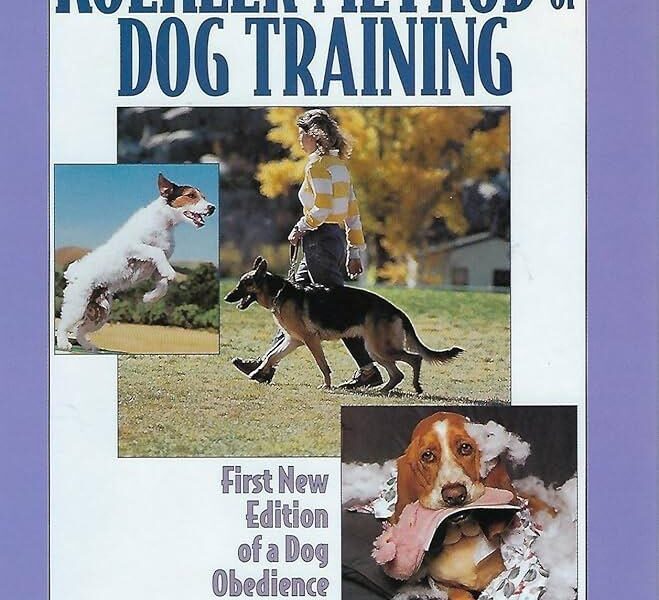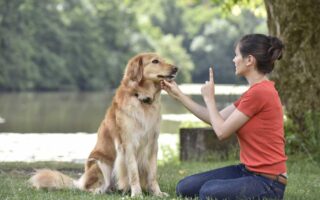Title: Unleashing Potential: The Koehler Method of Dog Training
Introduction:
In the vast and evolving landscape of dog training, various methods and philosophies have emerged, each promising a harmonious relationship between humans and their canine companions. Among these approaches stands the Koehler Method, a structured and pragmatic technique developed by its namesake, William Koehler, in the mid-20th century. This method, rooted in the principles of obedience and discipline, emphasizes the importance of clear communication and consistent leadership. With its distinctive blend of positive reinforcement and corrective measures, the Koehler Method seeks to not only train dogs but also to forge a deeper understanding between handler and pet. As we delve into the intricacies of this approach, we explore its fundamental principles, its historical context, and its relevance in today’s world of canine companionship. Whether you’re a new dog owner or a seasoned trainer, understanding the Koehler Method could add a valuable tool to your training repertoire. Join us as we unpack the philosophy and practice of this time-tested technique and discover how it can lead to well-behaved, balanced, and happy dogs.
Table of Contents
- Understanding the Koehler Method: Principles and Philosophy
- Essential Techniques of the Koehler Method for Effective Training
- Building a Strong Bond: The Role of Positive Reinforcement
- Common Mistakes to Avoid When Implementing the Koehler Method
- Q&A
- Concluding Remarks
Understanding the Koehler Method: Principles and Philosophy
The Koehler method, rooted in the principles of operant conditioning, emphasizes the importance of building a strong relationship between the dog and the handler. At its core, this approach advocates for clear communication, consistency, and positive reinforcement. By establishing a mutual understanding, dog trainers can effectively guide their canine companions through a structured environment. The method promotes the idea that training should not be merely about obedience but also about cultivating a deep bond through trust and respect. This process involves utilizing a range of training tools, including leashes and collars, each serving a specific purpose in driving home the desired behavior.
The philosophy behind the Koehler method recognizes that effective training is a blend of discipline and affection. The technique encourages trainers to adopt a balanced approach that incorporates both positive and corrective measures. This duality supports the idea that dogs thrive when they understand their boundaries while also being rewarded for their achievements. By following the principles of this method, trainers and their canine counterparts can achieve harmony, where the dog feels secure and confident in its actions. Additionally, this philosophy fosters an environment where learning becomes a shared journey, allowing for growth on both sides.
Essential Techniques of the Koehler Method for Effective Training
The Koehler method emphasizes the harmony between the trainer and the dog, utilizing a combination of positive reinforcement and structured discipline to achieve effective training outcomes. The foundation of this approach lies in understanding a dog’s natural instincts and using them to facilitate learning. Key techniques include:
- Timing: Immediate rewards or corrections help the dog associate the action with the outcome.
- Consistency: Repeating commands and actions ensures the dog understands what is expected.
- Patience: Allow ample time for the dog to process and respond to commands.
Another hallmark of the Koehler method is the concept of leadership through guidance. This entails not only directing the dog but also making training sessions engaging and purposeful. Essential components include:
- Physical connection: Using a leash to guide without pulling fosters trust.
- Clear commands: Simple, distinct words improve the dog’s understanding.
- Reward systems: Developing a consistent system for rewards encourages repeat behaviors.
Building a Strong Bond: The Role of Positive Reinforcement
Positive reinforcement is a cornerstone of effective training methods, fostering a strong connection between you and your dog. By rewarding desirable behaviors—such as sitting, staying, or coming when called—you create an environment filled with encouragement and trust. This not only enhances your dog’s motivation but also promotes a greater willingness to learn and adapt. The joy of receiving treats, praise, or even a playful game after performing a command builds an emotional link that deepens your overall relationship. As your dog associates good behavior with positive outcomes, they become more likely to repeat those actions, leading to a harmonious companionship.
Implementing positive reinforcement involves a few key strategies that can effectively strengthen your bond:
- Consistent Rewarding: Ensure you respond quickly with a reward when your dog performs the desired behavior.
- Variety of Rewards: Use a mix of treats, verbal praise, and playtime to keep your dog engaged.
- Clear Commands: Use simple, consistent commands to avoid confusion and enhance learning.
Incorporating these elements into your training routine promotes a positive learning experience that strengthens the human-animal bond. The reinforcement of good behavior not only makes training enjoyable but also gives your dog the confidence to explore and learn in their environment.
Common Mistakes to Avoid When Implementing the Koehler Method
When implementing the Koehler Method of dog training, it’s crucial to understand the nuances of the approach to avoid common pitfalls. One frequent mistake is over-correcting a dog during training sessions. This method emphasizes energy and assertiveness, but it’s vital to maintain a balance. Excessive correction can lead to fear or anxiety in the dog, potentially damaging the bond between you and your pet. Here are some points to consider:
- Understand Correct Timing: Timing is essential; corrections should be immediate to reinforce the desired behavior.
- Know Your Dog: Different breeds and personalities respond uniquely to corrections.
- Consistency is Key: Ensure all family members are on the same page regarding commands and corrections.
Another common mistake is neglecting to pair training with positive reinforcement. While the Koehler Method allows for corrections, it should not overshadow the importance of rewarding good behavior. It’s beneficial to integrate praise and treats when your dog complies with commands. This dual approach fosters a supportive learning environment, enhancing the effectiveness of the training. Consider these aspects:
- Balance Corrections with Rewards: Find a ratio of corrections to praises that works for your dog.
- Adjust Training Techniques: If a specific correction isn’t yielding positive results, be open to modifying your approach.
- Monitor Your Dog’s Progress: Regularly assess your dog’s reactions to ensure they are happy and engaged.
Q&A
Q&A: Understanding the Koehler Method of Dog Training
Q: What is the Koehler Method of Dog Training?
A: The Koehler Method is a traditional approach to dog training, developed by William Koehler in the mid-20th century. It emphasizes a structured, disciplined, and correction-based system, focusing on commands and obedience training through methods that include both positive and negative reinforcement.
Q: What are the main principles of the Koehler Method?
A: The Koehler Method is built on several core principles. It seeks to establish clear communication between the trainer and the dog, using a systematic method for teaching commands. It includes:
- Consistency: Always applying the same commands and corrections to foster understanding.
- Timing: Providing immediate feedback—both rewards and corrections—to reinforce learning.
- Motivation: Using a balance of rewards such as praise and treats, combined with corrections when necessary, to motivate the dog effectively.
Q: How does the Koehler Method differ from other dog training methods?
A: Unlike some modern dog training approaches that focus predominantly on positive reinforcement, the Koehler Method incorporates both reinforcement and aversive stimuli. This approach may stand in contrast to the growing trend of fear-free or positive-only training methods, emphasizing a mixed-method approach to develop a responsive and obedient dog.
Q: What types of problems can the Koehler Method help address?
A: The Koehler Method is particularly effective in dealing with behavioral issues such as jumping up, barking excessively, and disobedience to commands. It is designed for trainers who seek to establish firm boundaries and expectations in their pet’s behavior, especially in scenarios requiring strong behavior management.
Q: Who can benefit from the Koehler Method?
A: The Koehler Method can be beneficial for dog owners looking for a structured, disciplined training program. It is especially suitable for working dogs, service dogs, and breeds that require firm leadership and clear communication. However, this method requires a trainer who is confident and understands the importance of balancing corrections with praise to avoid confusion or fear in the dog.
Q: Are there any criticisms of the Koehler Method?
A: Yes, the Koehler Method has faced criticism, particularly from advocates of positive reinforcement training. Critics argue that the correction-based techniques can lead to anxiety or fear in dogs if not applied correctly. It’s essential for trainers to be knowledgeable and sensitive to their dog’s reactions to ensure a positive learning experience.
Q: Is the Koehler Method suitable for all dog breeds?
A: While the Koehler Method can be applied to various breeds, it may be more effective for certain breeds that respond well to firm boundaries and corrective measures. Each dog’s temperament and individual personality play a critical role in how well they respond to this training style, so adaptability and understanding are key.
Q: How can someone get started with the Koehler Method?
A: To get started with the Koehler Method, it’s advisable to seek resources such as books by William Koehler, instructional videos, or classes taught by experienced trainers familiar with this technique. Additionally, consulting with a professional trainer who understands the nuances of this method can provide guidance tailored to you and your dog’s needs.
Q: What is the ultimate goal of the Koehler Method?
A: The ultimate goal of the Koehler Method is to foster a well-mannered, obedient dog that understands its place within the family structure. By combining discipline with motivation, the Koehler Method aims to establish a strong bond between the dog and the owner, ensuring clarity and respect in their relationship.
—
This Q&A provides a comprehensive look at the Koehler Method, offering insights into its principles, applications, and considerations for potential trainers.
Concluding Remarks
the Koehler Method of dog training offers a unique philosophical approach that emphasizes the importance of leadership, consistency, and mutual respect between trainer and canine. By harnessing the principles of positive reinforcement while addressing behavioral challenges with clear boundaries, this method encourages a harmonious relationship built on trust and understanding.
As dog owners and trainers, mastering this technique requires patience, practice, and an open mind. Whether you’re a seasoned trainer or a novice seeking guidance, the Koehler Method provides valuable insights that can help you navigate the complexities of dog behavior.
Ultimately, the journey of training a dog transcends specific techniques; it is about fostering an enduring bond that enriches both your life and the life of your four-legged companion. So, as you embark on this training adventure, remember to cherish each small victory, for it is through those moments that the foundation of a lifelong friendship is established.



